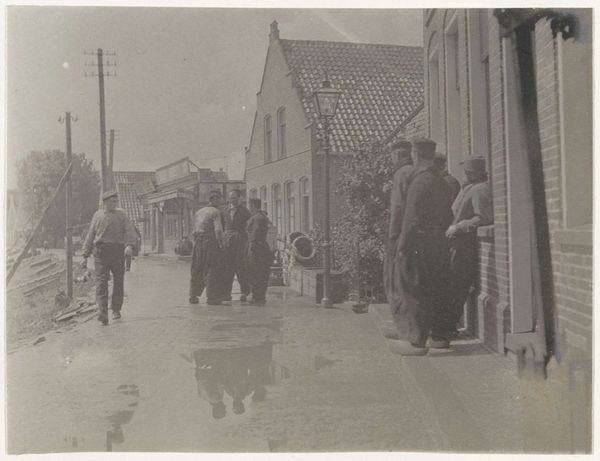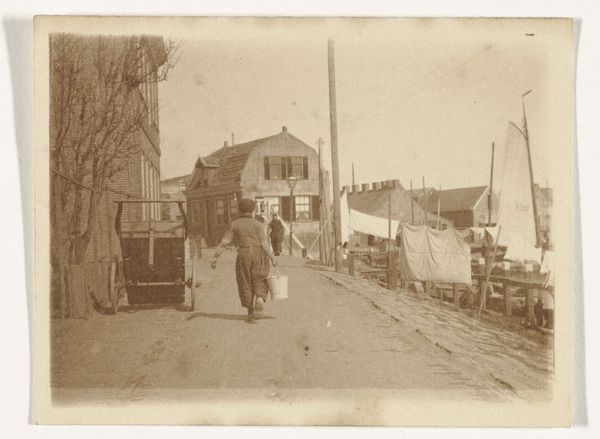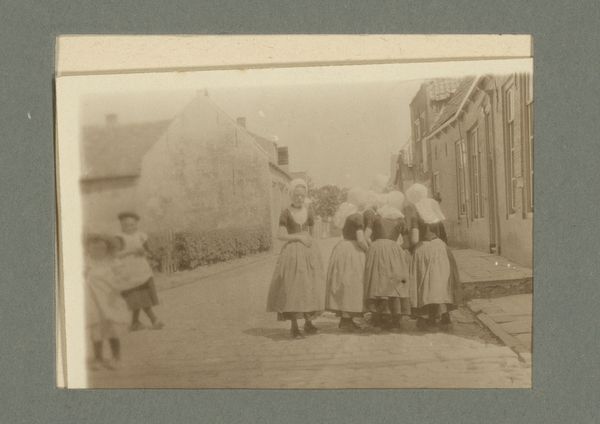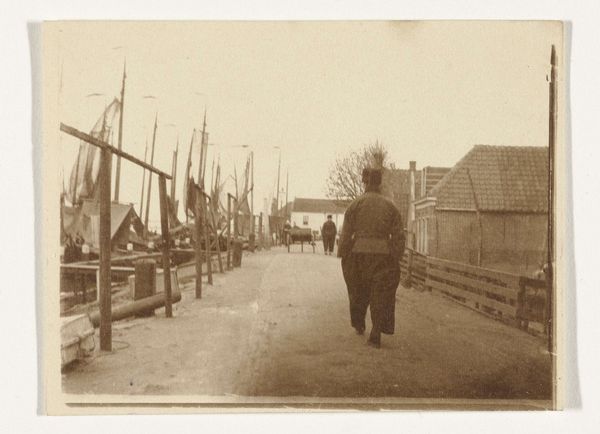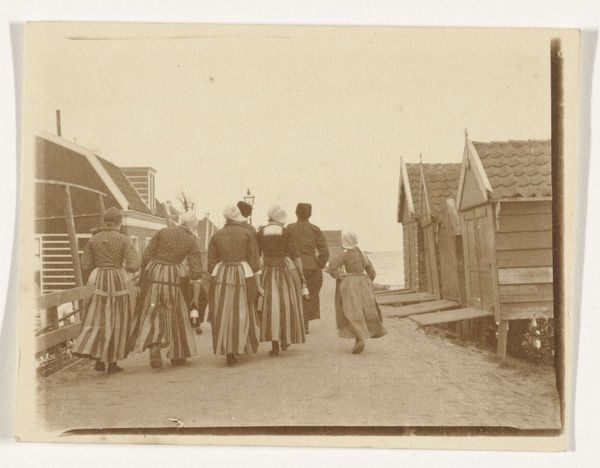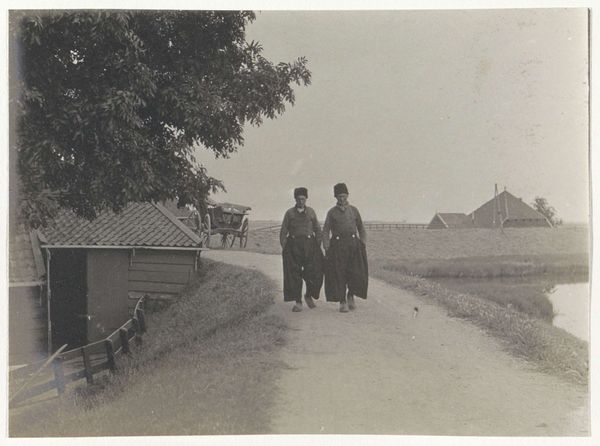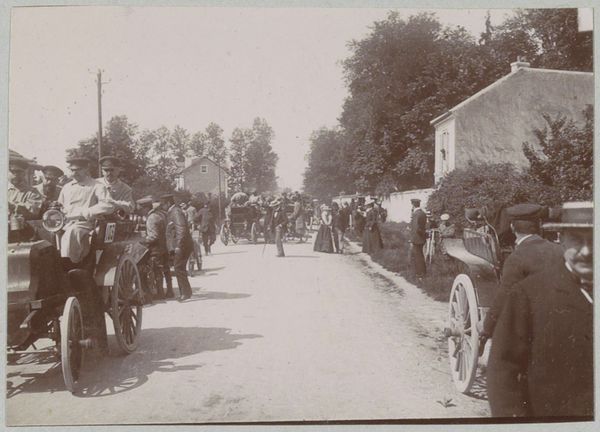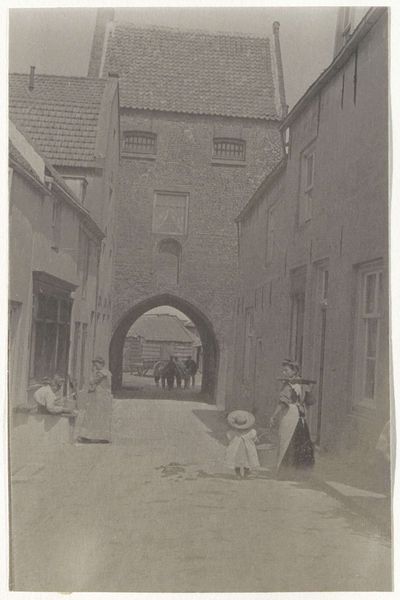
photography, gelatin-silver-print
#
portrait
#
landscape
#
photography
#
gelatin-silver-print
#
genre-painting
#
realism
Dimensions: height 74 mm, width 100 mm
Copyright: Rijks Museum: Open Domain
Curator: This photograph, "Gezicht op een dijk in Volendam met mensen in klederdracht," taken around 1900 to 1910 by G. Hidderley, captures a street scene in Volendam, Netherlands. It's a gelatin silver print. Editor: It feels heavy somehow, even nostalgic. The monochromatic tones and dense composition really evoke a sense of daily life rooted in a specific place and time. You can almost smell the dampness. Curator: Indeed. The choice of the gelatin silver print underscores the emphasis on representing reality. Realism in that period tried to mirror social dynamics, cultural heritage. Here we are given this traditional garb worn as a symbol of community identity and resilience. The intersection between costume, performance of tradition and class anxieties in a rapidly changing world becomes apparent. Editor: And what of the actual process? Consider the labor behind each print. It’s so easy now to detach photography from manual craft. The image shows its age with slightly distressed details which emphasizes a feeling of texture and its handcrafted nature, it invites contemplation on the shift from artisanal methods to mass production and cultural consumption. Curator: I would further contextualize the act of observing "folk" life. The photograph reinforces societal expectations and maybe, even limitations, assigned based on gender or ethnicity, especially during a period of urbanization, and nation-state building. The "portrait" locks those depicted in its historical power dynamics. Editor: Good point, but, the image is more than its socio-historical conditions, for all that history bears heavily in viewing it today. The weathered wood, brick, the density of dress, how these textures emerge from that era—to create an almost tactile feel? You appreciate photography's alchemical ability to transform what's physically real into a medium to ponder life. Curator: Exactly, this piece exemplifies how art exists to reflect broader political, cultural forces. It provides lenses to examine history—in order to recognize biases and social injustice. Editor: Seeing Hidderley's picture with this knowledge opens ways of viewing the transformations of our world from then to now, from manufacture, social dynamics, to its own survival as material, as object.
Comments
No comments
Be the first to comment and join the conversation on the ultimate creative platform.

